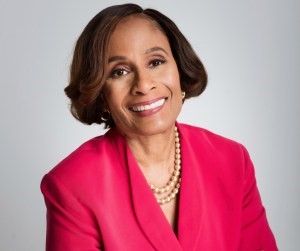
From the AFRO publisher’s desk: financial training can’t start too early
By Frances “Toni” Draper,
AFRO Publisher and CEO
It was a colorful 3×5 card (more like a booklet) with patriotic symbols and slogans about money. Every day, I put a dime in one of its tiny slots. If I recall correctly, the card held about five dollars worth of dimes that I could take to school and exchange for a U.S. Savings Bond.
U.S. Savings Bonds were sold in schools as part of a program called the “Savings Bonds in Education Program.” The program began in 1956 and continued through the 1970s. It was designed to encourage students to save money and to learn about finance, while supporting the government. Under the program, bonds could be purchased for as little as $1.
This was a big deal for me and my classmates at Gwynns Falls Elementary School– and for students throughout Baltimore. It was also, for many of us, our first real introduction to savings—piggy banks excluded. Through savings bonds, we learned that if we held on to our bonds for a specified length of time, they would be worth more upon redemption. However, the interest rate was so low it took a long time to get to face value!
This was my first introduction to finance and savings. A few years later, I got another lesson in finance from my mother who was a single parent to three school-aged children. I was the oldest. One day, my mother called all three of us into a family meeting and said “I’m working two jobs and in graduate school, and I need some help. So, from now on, your sister Toni will be handling the family checkbook, and paying the bills for the household.”
What? I’m 16. What do I know about checkbooks and bills?! Isn’t it enough that I have two younger siblings to watch? Well, anyone who knew my mother, knows that didn’t deter her. Not one bit.
A couple of weeks later, she took me to the bank and added my name to her checking account. Then she sat me down at the dining room table, gave me a list of bills and said, “Just make sure we have food, that the mortgage is paid, and that the lights stay on.”
Surely, she’s kidding, I thought to myself.
I didn’t even like math (or so I thought), much less budgets and bills. Thank God, she coached me along the way and eventually I learned how to handle the family finances. And, yes, we ate every day and the lights stayed on.
The point of sharing this story is not to highlight my mom or me, but to highlight the importance of teaching financial lessons to our children at an early age – the earlier the better. Many times, however, that’s not what’s happening in the Black community for a variety of reasons. So, I decided to go the Artificial Intelligence (chat.openai.com) route to see what “they” had to say in response to my query, “Why is it that many Black Americans do not know about finance and investing.”
Below is the AI-generated response: “There are a number of factors that contribute to the financial literacy gap among Black Americans. Some of these factors include:
- Historical and ongoing discrimination: Black Americans have faced discrimination in many areas of life, including education, employment and housing, which has limited their access to financial resources and opportunities.
- Lack of access to financial education: Many schools do not offer comprehensive financial education, and Black Americans may not have access to financial literacy resources outside of school. Additionally, financial information is often written in complex terms and jargon, which can make it difficult for people with limited financial education to understand.
- Lack of trust in financial institutions: due to historical and ongoing discrimination, many Black Americans have a lack of trust in financial institutions and may be hesitant to invest their money. They may also be more likely to rely on informal financial networks, such as friends and family, rather than traditional financial institutions.
- Economic inequality: Black Americans are more likely to live in poverty and have lower median incomes than White Americans, which can make it difficult to save and invest money.
Wow! AI is going to be (and already is) a game changer.
It is important to note that these factors are not exclusive to Black Americans, and that financial literacy is a widespread issue in the United States. It is important to address financial literacy as a systemic issue that requires a comprehensive approach, including increasing access to financial education, promoting financial inclusion, and addressing the root causes of economic inequality and discrimination.”
Bottom line? While structural and overt racism are still alive and well in America, financial literacy is a must for the advancement of any community and the creation of generational wealth.
As Booker T. Washington so aptly said, “At the bottom of education, at the bottom of politics, even at the bottom of religion, there must be for our race economic independence.”
This article includes information generated by artificial intelligence.
The post From the AFRO publisher’s desk: financial training can’t start too early appeared first on AFRO American Newspapers .
This article originally appeared in The Afro.










